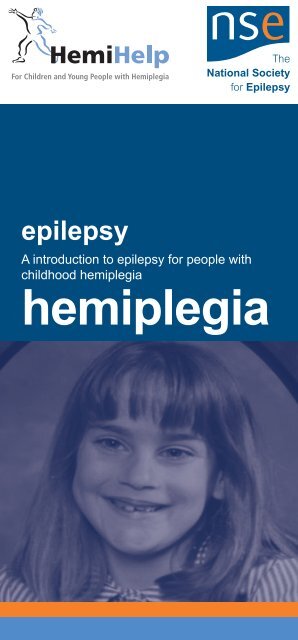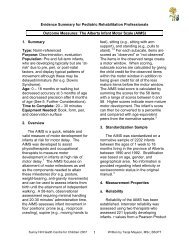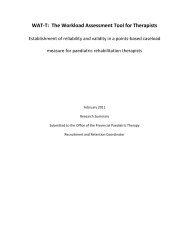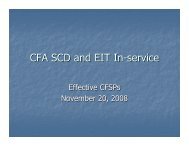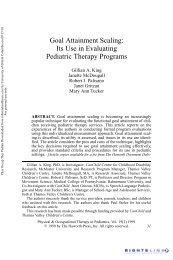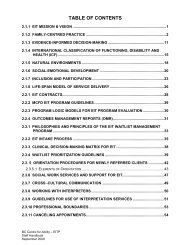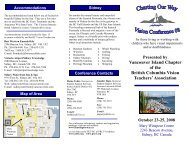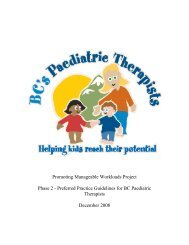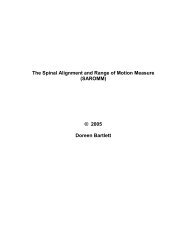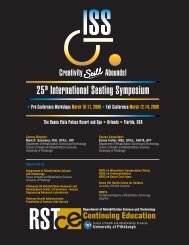hemiplegia - Therapy BC
hemiplegia - Therapy BC
hemiplegia - Therapy BC
Create successful ePaper yourself
Turn your PDF publications into a flip-book with our unique Google optimized e-Paper software.
epilepsy<br />
A introduction to epilepsy for people with<br />
childhood <strong>hemiplegia</strong><br />
<strong>hemiplegia</strong>
epilepsy and<br />
<strong>hemiplegia</strong><br />
“both <strong>hemiplegia</strong> and epilepsy are<br />
neurological conditions and both<br />
conditions are relatively common”
An introduction to epilepsy<br />
for people with childhood<br />
<strong>hemiplegia</strong><br />
You may be reading this leaflet because your<br />
child or someone you know has <strong>hemiplegia</strong>.<br />
They may also have epilepsy, or you may<br />
have heard that epilepsy is common in<br />
people with <strong>hemiplegia</strong>. In this leaflet we<br />
look at what <strong>hemiplegia</strong> and epilepsy are,<br />
and why these conditions sometimes happen<br />
together.<br />
Hemiplegia and epilepsy<br />
Both <strong>hemiplegia</strong> and epilepsy are<br />
neurological conditions, which means they<br />
are conditions that are caused by something<br />
that goes wrong in the brain. Both conditions<br />
are relatively common, and epilepsy is<br />
common in people with <strong>hemiplegia</strong>. So<br />
why do the conditions sometimes happen<br />
together? To answer this, it is useful to know<br />
a bit about the brain and how it works.<br />
The brain<br />
Our brains are very complex, and control<br />
everything we do - our movement,<br />
consciousness, thoughts and emotions. The<br />
brain is made up of two halves, the left and<br />
right hemispheres. The right hemisphere<br />
controls the left side of our body, and the<br />
left hemisphere controls the right side of<br />
3
our body. Each hemisphere contains four<br />
different areas or lobes, and each lobe is<br />
responsible for something different. For<br />
example, the temporal lobe (at the side of the<br />
brain, above our ears) is responsible for our<br />
memory and emotions, and the occipital lobe<br />
(at the back of the brain) is responsible for<br />
our vision and what we see.<br />
Each hemisphere of the brain is made<br />
up of millions of brain cells, called neurones.<br />
Neurones are the cells that send and receive<br />
the messages (electrical signals) around our<br />
brain that tell our body what to do.<br />
When something goes wrong in our<br />
brain, for example if our brain does not<br />
develop properly before we are born or if<br />
we have an accident or head injury, this can<br />
affect the way our brain works. Sometimes<br />
this effect is permanent and sometimes it can<br />
affect us just some of the time.<br />
What is <strong>hemiplegia</strong>?<br />
Hemiplegia (sometimes called hemiparesis)<br />
literally means paralysis of half of the body.<br />
When someone has <strong>hemiplegia</strong> (‘hemi’<br />
means ‘half’ in Greek) it is because one of<br />
the hemispheres of their brain is damaged.<br />
We talk about a left or right <strong>hemiplegia</strong>,<br />
depending on the side affected.<br />
About 1 in every 1,000 children has<br />
<strong>hemiplegia</strong>. In the majority of cases the<br />
damage to the brain happens before,<br />
during or soon after birth, when it is known<br />
4
as congenital <strong>hemiplegia</strong>. Some children,<br />
however, develop <strong>hemiplegia</strong> after a stroke<br />
(when a bleed or a blood clot damages part<br />
of the brain), an accident, a brain infection or<br />
tumour. This is called acquired <strong>hemiplegia</strong>.<br />
Some people develop <strong>hemiplegia</strong> in<br />
adulthood, again following illnesses such as<br />
a stroke, accident, infection or tumour.<br />
Hemiplegia affects everyone differently<br />
but its most obvious result is a varying<br />
degree of weakness and lack of control in<br />
one side of the body (rather like someone<br />
who has had a stroke). Some children are<br />
only mildly affected, others more seriously;<br />
in some the leg is more badly affected than<br />
the arm, in others it is the arm which is<br />
more seriously affected. But in a majority of<br />
children the damage to their brain affects<br />
more than their limbs and movement.<br />
Specific learning difficulties such as<br />
dyslexia, perceptual and concentration<br />
problems are common, as are emotional and<br />
behavioural problems. And <strong>hemiplegia</strong> can<br />
also cause medical problems such as visual<br />
impairment, speech difficulties and epilepsy.<br />
Hemiplegia is a permanent condition, so<br />
it will not go away and it cannot be cured. But<br />
it is also non-progressive, which means it will<br />
not get any worse, and with help its effects<br />
may be reduced. When a child is diagnosed<br />
with <strong>hemiplegia</strong>, they are usually referred<br />
to a Child Development Centre, often within<br />
local hospitals. Here, different therapists<br />
5
work with the child to lessen the effects of<br />
the condition, strengthen the weakened side<br />
of the body, and develop the skills of the<br />
individual.<br />
For more information about <strong>hemiplegia</strong><br />
contact the HemiHelp helpline on 0845 123<br />
2372 or visit www.hemihelp.org.uk.<br />
What is epilepsy?<br />
Epilepsy is the tendency to have repeated<br />
epileptic seizures. Epileptic seizures happen<br />
when the way the brain normally works is<br />
temporarily disrupted (when the messages<br />
the brain sends to communicate with the<br />
rest of the body become disorganised). This<br />
disrupted activity can last from a couple<br />
of seconds to a few minutes, and can<br />
make the person’s body do strange things.<br />
Many people (about 1 in 30) will have an<br />
epileptic seizure some time in their lives.<br />
But having one seizure does not mean you<br />
have epilepsy - epilepsy is the tendency to<br />
have repeated seizures and so is usually<br />
only diagnosed after two or more seizures.<br />
Nevertheless it is a common condition,<br />
affecting 1 in every 131 people.<br />
An epileptic seizure is a sudden brief<br />
event that causes a change in a person’s<br />
awareness of where they are or what they<br />
are doing, their behaviour or their feelings.<br />
What happens during a seizure depends on<br />
where in the brain the disrupted activity is,<br />
and how much of their brain is affected.<br />
6
There are many types of seizures but<br />
we can divide them into two groups –<br />
generalised and partial (or focal) seizures. In<br />
generalised seizures the whole of the brain<br />
is affected by the seizure, and the person<br />
becomes unconscious and will not remember<br />
the seizure. Examples of these seizures<br />
include absences (in which the person briefly<br />
looks blank and loses awareness) and tonic<br />
clonic seizures (in which the person’s body<br />
suddenly stiffens, they fall down and then<br />
their body shakes or convulses).<br />
In partial seizures the seizure affects<br />
just part of the brain and the person may not<br />
lose consciousness, although they might<br />
become quite confused. What happens<br />
depends on where in the brain the seizure<br />
happens, and what this part of the brain<br />
normally does. For example, the person may<br />
get pins and needles in part of their body;<br />
they may get a strange taste in their mouth<br />
or a sudden feeling of fear; they may become<br />
very confused, or make strange movements<br />
with their arms or legs; or they may make<br />
strange noises or lip-smacking or chewing<br />
movements with their mouth.<br />
What is the relationship between<br />
<strong>hemiplegia</strong> and epilepsy?<br />
Both <strong>hemiplegia</strong> and epilepsy are conditions<br />
caused by a malformation or damage to<br />
the brain or a change in the way the brain<br />
works. In some people the brain damage that<br />
7
causes <strong>hemiplegia</strong> can also cause epilepsy.<br />
Statistics vary, but at least 20% (1 in 5) of<br />
children with <strong>hemiplegia</strong> also have epilepsy.<br />
In most children with both conditions,<br />
epilepsy starts before the age of 5, and the<br />
chances of developing epilepsy seem to<br />
reduce as the child gets older, especially<br />
after the age of 10.<br />
Seizures and <strong>hemiplegia</strong><br />
As we saw on page 4, <strong>hemiplegia</strong> is caused<br />
by damage or malformation in one half of<br />
the brain. If the damage that has caused<br />
<strong>hemiplegia</strong> also causes the epilepsy, it is<br />
likely that the child will have partial seizures<br />
– that is, seizures that start in and affect<br />
just part of the brain. As we saw on page 7<br />
partial seizures can vary, and although the<br />
person may not lose consciousness they<br />
may be confused. However, some children<br />
have generalised seizures and some have<br />
‘startle’ seizures. Startle seizures happen<br />
in response to a shock or surprise, for<br />
example a sudden loud noise or by tripping<br />
or stumbling when walking. What happens<br />
during this type of seizure varies but often<br />
it will include stiffening or posturing (making<br />
strange movements) of the arm or leg.<br />
Some individuals have more difficult<br />
or complicated epilepsy, called epileptic<br />
encephalopathies. These are more severe<br />
types of epilepsy, with more serious effects.<br />
Epileptic encephalopathies can cause<br />
8
learning disabilities and can affect how well<br />
someone can think, understand and interact<br />
with the world around them.<br />
How is epilepsy treated?<br />
Most children with epilepsy, including those<br />
who also have <strong>hemiplegia</strong>, have their<br />
seizures treated with anti-epileptic drugs<br />
(AEDs). These drugs cannot cure epilepsy,<br />
but they work on the brain to try and stop<br />
seizures from happening. Which particular<br />
AED is used depends on the type of seizures<br />
the individual has because some AEDs work<br />
better for certain seizures. Around 70% of<br />
people can have their seizures controlled<br />
with AEDs.<br />
When a child’s epilepsy doesn’t respond<br />
to AEDs and they continue to have seizures,<br />
brain surgery may be considered. Surgery<br />
is only carried out after extensive tests and<br />
if the child has partial seizures (that start in<br />
just part of the brain). The aim of surgery is<br />
to stop seizures occurring by removing or<br />
separating the part of the brain that causes<br />
the seizures. In most cases intelligence and<br />
skills will not be seriously affected, and the<br />
surgery can improve their life dramatically.<br />
For more information about epilepsy<br />
contact NSE’s helpline on 01494 601 400 or<br />
visit www.epilepsynse.org.uk.<br />
9
The impact of <strong>hemiplegia</strong> and epilepsy<br />
Both <strong>hemiplegia</strong> and epilepsy are variable<br />
conditions that can affect people in different<br />
ways and to different degrees. Many of the<br />
effects of these conditions are physical, such<br />
as muscle or limb weakness, or seizures.<br />
However, there are often emotional effects<br />
of living with these conditions. Your child<br />
may have many different feelings about<br />
living with their condition. And as a parent of<br />
someone with <strong>hemiplegia</strong> and epilepsy you<br />
may experience many different emotions at<br />
different times too.<br />
If you would like to talk to someone about<br />
how you or your child are coping with living<br />
with <strong>hemiplegia</strong> or epilepsy, or you have any<br />
questions about either condition, you might<br />
like to call our helplines. The numbers are on<br />
the next page of this leaflet.<br />
10
Further information<br />
More information about <strong>hemiplegia</strong> is<br />
available from:<br />
HemiHelp<br />
Camelford House, 89 Albert Embankment,<br />
London SE1 7TP<br />
Helpline 0845 123 2372<br />
(Monday – Friday 10am – 1pm)<br />
www.hemihelp.org.uk<br />
Hemihelp produces over 30 information<br />
leaflets about living with <strong>hemiplegia</strong>,<br />
including information on diagnosis, treatment,<br />
education, financial help, behaviour and dayto-day<br />
activities.<br />
More information about epilepsy is available<br />
from:<br />
National Society for Epilepsy<br />
Chesham Lane, Chalfont St Peter,<br />
Bucks SL9 0RJ<br />
Helpline 01494 601 400<br />
(Monday - Friday 10am – 4pm)<br />
www.epilepsynse.org.uk<br />
NSE produces information leaflets on various<br />
issues around living with epilepsy including<br />
Seizures, What is it?, First aid, and Children<br />
and education.<br />
This leaflet has been jointly written and<br />
produced by Hemihelp and the<br />
National Society for Epilepsy.<br />
11
HemiHelp Camelford House<br />
Camelford 89 Albert Embankment<br />
House<br />
89 London Albert SE1 Embankment 7TP<br />
London Telephone SE1 0845 7TP 120 3713<br />
Telephone Fax 0845 120 0845 3723 120 3713<br />
Fax E-mail: 0845 Support@hemihelp.org.uk<br />
120 3723<br />
E-mail: Website support@hemihelp.org.uk<br />
www.hemihelp.org.uk<br />
Website Helpline www.hemihelp.org.uk<br />
Helpline<br />
0845 120 2372<br />
0845 123 2372<br />
Monday - Friday 10am - 4pm<br />
Monday - Friday 10am - 1pm<br />
A company limited by guarantee and registered in England<br />
A and company Wales. limited Registered by guarantee No. 4156922. and registered in England and Wales.<br />
Registered Hemihelp No. is a 4156922. registered charity - No. 1085349.<br />
Hemihelp is a registered charity - No. 1085349.<br />
National Society for Epilepsy<br />
Chesham Lane<br />
Chalfont St. Peter<br />
Bucks SL9 0RJ<br />
Telephone 01494 601 300<br />
Fax 01494 601 337<br />
www.epilepsynse.org.uk<br />
Epilepsy Helpline<br />
01494 601 400<br />
Monday - Friday 10am - 4pm<br />
A company limited by guarantee and registered in England and Wales.<br />
Registered No. 492761. NSE is a registered Charity - No 206186.<br />
Founded in 1892. Patron Her Majesty The Queen.<br />
This leaflet was produced<br />
thanks to a grant from the<br />
Roald Dahl Foundation.<br />
© National Society for Epilepsy and Hemihelp March 2007


